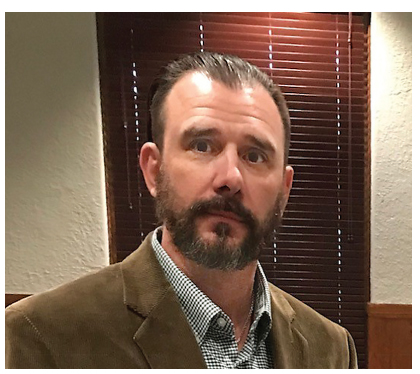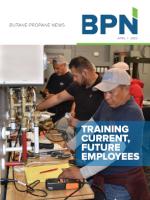Monday, April 27, 2020
 We’ve long understood that knowing about near misses in our business is a key to preventing future accidents, but employees typically don’t buy into the program for myriad reasons. The lack of responses to your request for employees to report near misses doesn’t mean that your company isn’t experiencing them, it just means that the employees don’t feel comfortable reporting them to you. Understanding the reasons why your program isn’t working is a key to ensuring that you address the concerns, circumvent the accidents, and prevent visits from OSHA, DOT, and any other agency that could wreak havoc on your company’s image and financial wellbeing.
We’ve long understood that knowing about near misses in our business is a key to preventing future accidents, but employees typically don’t buy into the program for myriad reasons. The lack of responses to your request for employees to report near misses doesn’t mean that your company isn’t experiencing them, it just means that the employees don’t feel comfortable reporting them to you. Understanding the reasons why your program isn’t working is a key to ensuring that you address the concerns, circumvent the accidents, and prevent visits from OSHA, DOT, and any other agency that could wreak havoc on your company’s image and financial wellbeing.The first roadblock to getting the appropriate information is making the process too difficult or stressful for the employee. Although having a “form” to fill out seems the quickest and most efficient way for management to gather the information, if the employee has to describe a scenario or write up a description of what happened, they may decide that the personal time required outweighs the associated risk. Less time-consuming and more favorably viewed options could be a tip line that the employee could call or an app that would appeal to more tech-savvy employees.
Ease of reporting is a positive first step, but it still requires the employee to recognize the risk or behavior and then voluntarily come forward with the information.
Employees being willing to come forward is the second roadblock to an effective near miss program. Employees fear being seen as a snitch and worry that their friends and coworkers could be punished or lose their jobs if they report a near miss. Additionally, employees might also fear reprisal from the coworker that they report. Anonymity is essential in any near miss program. The reporting process should never require a name, employee number, or any other identifying factor that could limit or prevent the outcomes you are trying to achieve.
No matter how well intentioned, designed, and important the reporting process is to your company, in the absence of a corporate culture that encourages the reporting, accepts the information as a chance to improve the organization, and does so without fear of reprisal or punishment against any employee, the intended results will never be met.
Proactive vs. Reactive
Although the entire thought process of reporting near misses is to be proactive in our approach to safety, with the intent of heading off the statistically predictable accidents that follow near misses, we can actually be even more proactive in our approach.
We’ve already determined that making the reporting process easy and anonymous is critical and that the overall culture of the organization must allow each employee to buy into the process as it seeks to make improvements rather than place blame. However, an even more proactive approach from management and a positive complement to that process is to ask employees directly.
Utilize one of your monthly safety meetings, or a part of one, to show or describe some common near miss accidents/incidents. Encourage discussion by asking the employees if they have seen anything similar while performing their daily job duties or in the past at another company. No matter how insignificant the example provided, it should be thoroughly explored in a serious and informative manner. This will signal to the employees that their concerns are of importance to you and that what they say has merit, which will make them and other employees consider wanting to further contribute to the conversation. The key objective is to generate lively discussion and to demonstrate that you truly do care about their well-being and the safe operations of the company and that you’re not on a “witch hunt.”
Having the Discussion
Because of the sensitive nature of these types of conversations, you must ensure that no comment is taken personally by you, the safety director, the supervisor, or the owner. If employees detect that you take exception to their comments, the discussion will cease, as will your goals of preventing future accidents.
It is critically important that you see if the employees can identify a hazard and a near miss. If they constantly step over tools on the shop floor, watch as bottles are filled without safety equipment, or review incomplete paperwork without sending it back for correction, employees may think that these practices are okay and that this is “just how it is at our company.” If employees have difficulty actually discerning what the hazard/risk is and how close they came to having an accident, you may need to discuss the types of information you are looking to receive from these discussions.
As you discuss and analyze your example near miss scenarios, ask employees the following questions:
- What hazards or risks do you observe?
- What is the near miss that could have caused a serious accident or injury?
- What could have been done to prevent the incident?
- What could the outcome have been if the near miss had not been reported?
In closing, it should be communicated that the safety and health of each employee and the success of the company is the responsibility of each employee, that you will take each report seriously, and that no employee will ever be reprimanded for reporting a near miss or being involved in a near miss because both allow you to make important and necessary improvements for the benefit of everyone.
Reward the Behavior
Instituting a reward system for employees, although not anonymous, can also be beneficial. The reward doesn’t have to be anything exorbitant. Even a $25 or $50 gift card can encourage employees to participate in the program and report what they see. Ensure that all employees receive their rewards in a very timely manner in order to show your support and acknowledgment of their time and effort. Consider a larger drawing or a luncheon at the end of the year for all the employees who participated.
Ultimately, your goal is to prevent what is preventable and to engage your greatest company asset in the endeavor. The benefits of the program are improved safety, improved morale, and improved profits. If you create a culture of cooperation and trust, you will surely accomplish your near miss goals and the employees will desire to be a part of the program because of that culture.
Until next time, stay safe out there!
Tom Mullaney is a commercial insurance risk control expert, specializing in the transportation, propane, and petroleum industries. As vice president of risk engineering for Aegis General Insurance Co., he is responsible for creating the vision and providing the leadership for the organization’s risk control efforts.
4/2020



